
Invited Lectures
Plenary Lectures
-
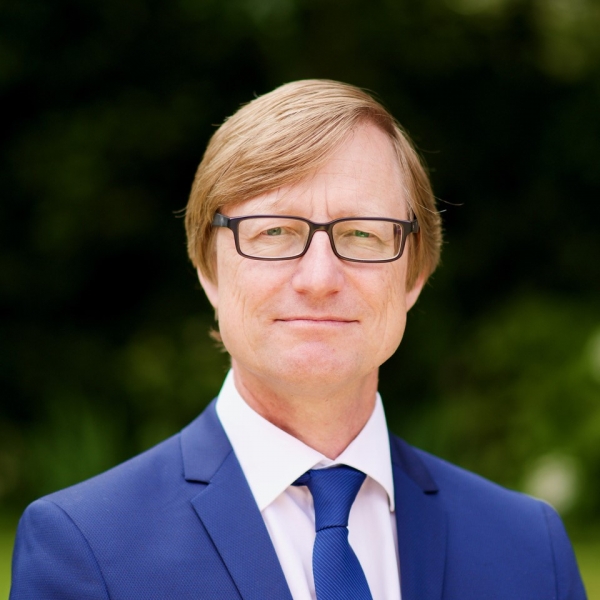 Prof. Holger Babinsky Aerodynamics, Engineering Department, University of Cambridge, UK
Prof. Holger Babinsky Aerodynamics, Engineering Department, University of Cambridge, UKTitle Corner effects in shock-wave/boundary-layer interactions
Corner effects in shock-wave/boundary-layer interactions
Prof. Holger Babinsky
Aerodynamics, Engineering Department, University of Cambridge, UK
The interaction of a shock wave with a turbulent boundary layer (shock-wave/boundary-layer interaction SBLI) is one of the fundamental building blocks of compressible flow. It is particularly important to understand under what circumstances a shock wave causes flow separation and how the overall flow is affected by the shape and location of such separations. Separated SBLI flows are also prone to unsteadiness which can introduce additional adverse effects on a flowfield.
Many flows of practical interest feature streamwise corners formed by the intersections of bounding surfaces (e.g. floors/side-walls or wing-body junctions). The viscous flow in these corner regions is often more susceptible to separation than the ‘main’ flow away from these areas.
In this presentation I will demonstrate that shock-induced flow separation in corners can have more than just a local effect. I will describe the influence of corner separations on three well-known canonical and quasi-2D SBLIs, namely the normal shock, oblique shock reflection and compression corner. In each case the main influence of corner separations is transmitted to the main flow through corner ‘waves’ which can be compressions (or shocks) and expansions. By understanding the influence of these waves on the main interaction, it is possible to explain differences in separation onset and topology. Recent experiments have also begun to explore the effect of corner separations on SBLI unsteadiness and some early results will be reported.Holger Babinsky studied Aerospace Engineering at Stuttgart University in Germany. He obtained a PhD in hypersonic aerodynamics from Cranfield University (UK) in 1994. After 18 months as Research Associate at the Shock Wave Research Centre of Tohoku University in Sendai, Japan he returned to the UK to take up a position in the Department of Engineering of the University of Cambridge. He is now Head of Fluid Mechanics, Energy and Turbomachinery as well as a Fellow of Magdalene College. His main areas of research are in the field of experimental aerodynamics and associated measurement techniques. Apart from shock wave/boundary layer interactions which he has studied for more than 30 years his current research includes the unsteady aerodynamics of micro-air vehicles, road vehicles, and flow control for transonic aircraft wings and supersonic engine inlets. He is a Fellow of the Royal Academy of Engineering, the Royal Aeronautical Society and the American Institute of Aeronautics and Astronautics. He is Editor-in-Chief of the Aeronautical Journal, the world’s oldest aerospace science journal, as well as an Associate Editor of Experiments in Fluids. He has supervised more than 40 PhD students and contributed around 80 articles to scientific journals. Together with Professor John Harvey (ex Imperial College), he has co-edited the first textbook on shock-wave/boundary-layer interactions, which has since been translated into Chinese. -
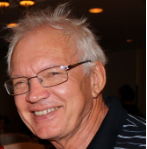 Prof. Richard Morgan School of Mechanical and Mining Engineering The University of Queensland, Australia
Prof. Richard Morgan School of Mechanical and Mining Engineering The University of Queensland, AustraliaTitle Non equilibrium effects in hypervelocity flows
Non equilibrium effects in hypervelocity flows
Prof. Richard Morgan
School of Mechanical and Mining Engineering The University of Queensland, Australia
Hypervelocity flows are characterised by very high flow enthalpies, and rapid changes in flow condition through phenomena such as shock waves and in flows around surfaces with high curvature. The high enthalpies can induce very high static temperatures which invoke thermo-chemical phenomena such as dissociation, ionisation, radiation and thermal and electronic excitation. Due to the high speeds involved, residence times in the associated shock layers are characteristically small, and significant departures from equilibrium may occur. The physical extent of the regions of non equilibrium flow, and the magnitude of the departures from equilibrium, can have a significant effect on the macroscopic aerodynamics and the thermal loading of the associated flight vehicles. Since the regime of hypervelocity flight ranges from free molecular flow in the upper reaches of the atmosphere to low altitude continua, there is a continually changing interaction between embedded regions of equilibrium, non equilibrium and ‘frozen’ (non equilibrium, but with stagnant chemistry) flows in the shock layers surrounding a vehicle. The kinetics are very specific to atmospheric composition, and so require focussed study for all the planets and the moons with atmospheres (Titan). The accurate modelling of non-equilibrium phenomena is therefore very important for the design of optimised high performance flight vehicles. This presentation will discuss the various manifestations of non equilibria and where they are likely to occur, and how scaling effects influence the methodology of laboratory investigations. The use of pulsed facilities for such purposes will be reviewed and a summary of some important remaining areas of uncertainty will be offered.I graduated with a DPhil in the use of infrared scanning for heat transfer measurements in transient hypersonic flows under Don Schultz from Oxford University in 1977, and have been a full time researcher/academic continuously since then.
The great opportunity of my career came when I joined the legendary Professor Ray Stalker in 1980 at UQ to work on Australia’s first scramjet program. Ray had by that time developed his famous ‘Stalker Tube’ family of hypersonic shock tunnels to an advanced level which gave us a platform from which to become significant players in the field of Hypersonics. That proved to be a unique apprenticeship under a Master Engineer and Scientist for what was to become the dominant focus of my career, the development of hypervelocity facilities. From 1990 I extended my activities to include super orbital expansion tubes, following on from the pioneering work of Ray Stalker and Allan Paull which had identified the cause of a major issue in expansion tube operations, and a methodology for overcoming it. This led to the development of the ‘X’ series of facilities which have become another trademark of the UQ Centre for Hypersonics. Since that time, I have continued to further develop our ground testing facilities. I was the founding director of UQ’s Centre for Hypersonics in 1977, a position I held until October 2021 when the baton was passed to younger and safer hands. -
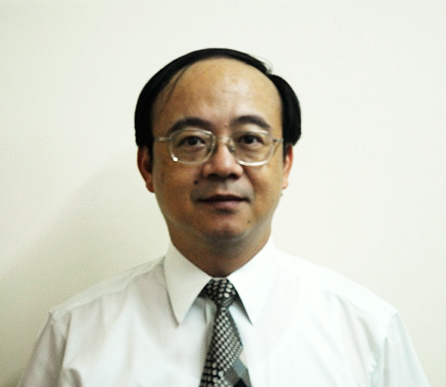 Prof. Chih-Yung Wen Department of Aeronautical and Aviation Engineering, The Hong Kong Polytechnic University, Hong Kong
Prof. Chih-Yung Wen Department of Aeronautical and Aviation Engineering, The Hong Kong Polytechnic University, Hong KongTitle Progress in hypersonic shock wave/boundary layer interactions over a compression ramp and a double cone
Progress in hypersonic shock wave/boundary layer interactions over a compression ramp and a double cone
Prof. Chih-Yung Wen
Department of Aeronautical and Aviation Engineering, The Hong Kong Polytechnic University, Hong Kong
In this talk, the recent numerical and theoretical research activities on shock wave/boundary layer interactions (SBLI) in High-speed Thermo-fluid and MAV/UAV Laboratory (HTML), HKPolyU, will be introduced, with emphases on the hypersonic laminar separation flows over a compression ramp and a double cone. Three areas will be reviewed: (i) understanding the intrinsic instability and transition, (ii) thermochemical/vibrational nonequilibrium effects, and (iii) leading-edge bluntness effects.
As demonstrated by recent numerical works and the earlier experiments, streamwise heat flux streaks form on the ramp/cone surface downstream of reattachment, and they are non-uniformly distributed in the spanwise/azimuthal direction. Due to the presence of intrinsic instability, the surface heat flux exhibits a low-frequency unsteadiness, which propagates in the streamwise direction. Additionally, the unsteadiness of the heat flux streaks downstream of reattachment is coupled with a pulsation of the reattachment position. Substantial success has been achieved in understanding the intrinsic instability and laminar-turbulent transition through complementary Direct numerical simulations (DNS) and theoretical studies by the Global Stability Analysis (GSA) and the triple-deck theory. Both DNS and GSA confirm that the supercritical ramp/double-cone flow is intrinsically three-dimensional, unsteady and exhibits strong spanwise/azimuthal variations in the peak heating. The global instability is shown to be closely linked with the occurrence of secondary separation beneath the primary separation bubble. Meanwhile, it is found that the shock-induced separated flow system becomes unstable when the deflection angle is beyond a certain value. A criterion is established based on a scaled deflection angle defined in the triple-deck theory to predict the global stability boundary, which depends on the free-stream conditions and geometries only. The critical deflection angle increases slightly with the wall temperature and, as the Reynolds number is further increased, the flow is strongly destabilized with the coexistence of multiple stationary and low-frequency oscillating unstable modes, leading to a transition process in a hypersonic compression-ramp/double-cone flow due to intrinsic instability of the flow system.
For thermochemical/vibrational nonequilibrium effects on SBLI, systematic studies were performed using different coupling models of vibrational excitation and dissociation, including a conventional two-temperature model as the baseline and an improved model established on elementary kinetics and validated against existing shock tube experimental data. For the double-cone flow with the highest total enthalpy, the improved model predicts a larger separation region and greater peak heat flux with relative differences of 20.3% and 29.2%, respectively, compared with the baseline two-temperature model. The differences are attributed to inaccurate modeling of the vibration–dissociation coupling effects by the conventional two-temperature model, which overestimates the post-shock degree of dissociation and underestimates the post-shock temperature. The size of the separation bubble is therefore altered due to the change in its density. For the condition with the low total enthalpy, the most representative flow model still underestimates the sizes of the separation regions for double cone flow and overestimates those for hollow-cylinder flare flow. It is concluded that inaccurate modeling of vibrational nonequilibrium may not be responsible for the discrepancies observed at the low total enthalpies. Suggestions for further study are also presented.
For leading-edge bluntness effects on SBLI, DNS of a compressible ramp flow shows that the separation bubble enlarges when the leading-edge radius is increased from zero up to a critical value. Beyond the critical radius, the separation bubble conversely shrinks as the radius is further increased. GSA demonstrates that the inherent instability in the flow field also exhibits a reversal trend, that is, the flow system firstly becomes more unstable and then tends to be more stable with increasing leading-edge radius. The growth rate and spanwise wavelength of the unstable modes identified by GSA are verified by DNS. The present study demonstrates that a proper blunting of the leading edge can suppress flow separation, reduce aerodynamic heating and stabilise the flow system for a hypersonic compression-ramp flow. Contrarily, the double-cone flow is insensitive to small bluntness in terms of shock structures, separation region sizes and surface pressure and heat flux distributions. A critical nose radius is observed, beyond which the separation bubble grows dramatically. The numerical data are analysed and interpreted based on a triple-deck formulation. It is shown that the sudden change in flow features is mainly caused by pressure overexpansion on the first cone due to leading-edge bluntness, such that the skin friction upstream of the separation is significantly reduced and the upstream pressure can no longer resist the large adverse pressure gradient induced by shock impingement. An estimation of the critical radius is established. Simulations at a higher enthalpy with the presence of both vibrational relaxation and air chemistry show a similar trend with increasing nose radius. The proposed criterion agrees well with the experimental observations.
Recent efforts on shock wave/turbulent boundary layer interactions will also be introduced.
Reference:
1. Cao, S.B., Hao, J.A., Klioutchnikov, I., Wen, C.Y., Olivier, H., Heufer, A., “Transition to turbulence in hypersonic flow over a compression ramp due to intrinsic instability,” Journal of Fluid Mechanics, accepted, 2022.
2. Hao, J.A., Fan, J.H., Cao, S. B., and Wen, C.Y., “Three-dimensionality of Hypersonic Laminar Flow over a Double Cone,” Journal of Fluid Mechanics, Vol. 935, A8, 2022.
3. Cao, S.B., Hao, J.A., Kiloutchnikov, I., Olivier, H., Heufer, A., Wen, C.Y., “Leading-edge Bluntness Effects on Hypersonic Three-dimensional Flows over a Compression Ramp,” Journal of Fluid Mechanics, Vol. 923, A27, July, 2021.
4. Hao, J.A., Cao, S.B., Wen, C.Y.*, and Olivier, H., “Occurrence of Global Instability in Hypersonic Compression Corner Flow,” Journal of Fluid Mechanics, Vol. 919, A4, July, 2021.
5. Cao, S.B., Hao, J.A.., Klioutchnikov, I., Olivier, H., Wen, C.Y., “Unsteady Effects in a Hypersonic Compression Ramp Flow with Laminar Separation,” Journal of Fluid Mechanics, Vol. 912, A3, 2021.
6. Hao, J. and Wen, C.Y., “Hypersonic Flow over Spherically Blunted Double Cones,” Journal of Fluid Mechanics, Vol. 896, A26, Aug. 10, 2020.
7. Hao, J.A., Wen, C.Y. and Wang, J.Y., “Numerical Investigation of Hypersonic Shock-Wave/Boundary-Layer Interactions over a Double-Wedge Configuration,” International Journal of Heat and Mass Transfer, Vol. 138, pp. 277-292, 2019.
8. Hao, J.A. and Wen, C.Y., “Numerical Investigation of Oxygen Thermochemical Nonequilibrium on High-Enthalpy Double-Cone Flows,” International Journal of Heat and Mass Transfer, Vol. 127, Part B, pp. 892-902, Dec. 2018.
9. Hao, J.A. and Wen*, C.Y., “Effects of Vibrational Nonequilibrium on Hypersonic Shock Wave/Laminar-Boundary-Layer Interactions”, International Communi-cations in Heat and Mass Transfer, Vol. 97, pp. 136-142, 2018.Wen Chih-Yung
Chair Professor of Aeronautical Engineering
Head, Departmentutical and Aviation Engineering (AAE), HKPolyU
BEng (National Taiwan University); MSc (Caltech, U.S.A.); PhD (Caltech, U.S.A.);
Associate Fellow of AIAA, HKIE Fellow
cywen@polyu.edu.hk
Area of Specialization
Aerothermodynamics of hypersonic vehicles; Supersonic combustion; Active flow control; MAV/UAV technologies; Shock/two phase fluids interaction; Detonation
Short Description
Professor Wen received his Bachelor of Science degree from the Department of Mechanical Engineering at the National Taiwan University in 1986 and Master of Science and PhD from the Department of Aeronautics at the California Institute of Technology (Caltech), U.S.A. in 1989 and 1994 respectively. He worked at Caltech as a Research Fellow from February 1994 to July 1994 and then continued his teaching and research works at the Department of Mechanical Engineering at the Da-Yeh University, Taiwan. He was promoted to full professorship in February 2002. He had been the Chairman of the Department of Mechanical and Vehicle Engineering from August 1997 to July 2000, and the Provost from August 2004 to July 2006 in the Da-Yeh University, Taiwan. In August 2006, Professor Wen joined the Department of Aeronautics and Astronautics of the National Cheng Kung University (NCKU), Taiwan, before joining the Department of Mechanical Engineering, The Hong Kong Polytechnic University in 2012 as professor. While serving in HKPolyU, he has been the associate head (research) of ME department and the interim head of AAE from 2015 to 2019 and from 2019 to 2021, respectively. He is currently serving as the head of Deparment of Aeronautical and Aviation Engineering (AAE), HKPolyU. Professor Wen has authored and co-authored more than 300 scientific papers, conference papers and book chapters. He was also awarded 15 patents. His current research interests are in the areas of (1) Hypersonic/Supersonic aerothermodynamics; (2) Shock/Droplet and Shock/Bubble Interactions; (3) Detonation; (4) Flow Control by plasma actuators; (5) Technology development of UAVs and MAVs; and (6) Urban Wind Environment Simulation. Professor Wen, currently an AIAA Associate Fellow and editor/associate editor of the prestigious international journal—Shock Waves Journal, and Advanced in Aerodynamics. He served as the associate editor of AIAA Journal and vice chair of the technical committee of fluid mechanics, ASME. He is also a member of, various key professional boards and bodies related to the Aerospace Engineering. -
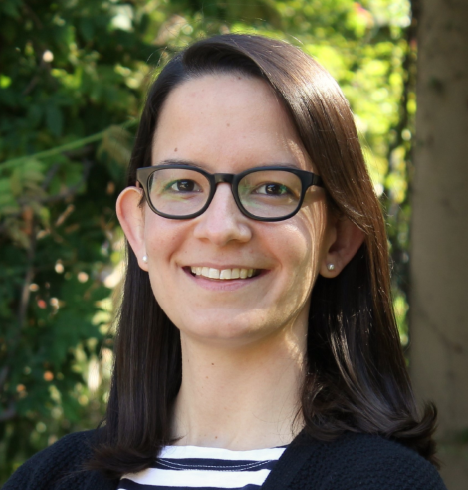 Dr. Alison M. Ferris Mechanical Engineering, Stanford University, USA
Dr. Alison M. Ferris Mechanical Engineering, Stanford University, USATitle [Ray Stalker plenary lecture] Enabling new research frontiers: Recent advancements in shock tube design and utilization
Enabling new research frontiers: Recent advancements in shock tube design and utilization
Dr. Alison M. Ferris
Mechanical Engineering, Stanford University, USA
Since its invention in 1899, the shock tube has become a key tool used to study supersonic/hypersonic flows, reaction kinetics, material transformation, and biological systems. While the operating principles of a shock tube have not changed, the past few decades have seen advancements in both shock tube design and utilization, especially for the study of high-temperature reaction kinetics. This talk will highlight a select number of recent shock tube design innovations that have had an outsize impact on their related fields of study. These innovations include the use of a curved driver section, driver inserts, and driver gas tailoring to achieve long test times (>100 ms); the use of optically accessible test sections to provide insight into test gas inhomogeneities and flame phenomena; and the advent of extremely small and extremely large shock tube/shock tunnel facilities. The second half of this talk will focus on new, emerging frontiers in shock tube research that have come about, in large part, due to the innovations described above. These new frontiers include the use of shock tubes in materials/fuel synthesis, high-temperature flame speed measurements, and comprehensive speciation for chemical kinetics studies.Alison Ferris is a Research Scientist at Stanford University where she oversees multiple research initiatives in Professor Ron Hanson’s Shock Tube and Optical Diagnostics Laboratory. Her research interests include using shock waves and optical diagnostics to study the design, chemical synthesis, and reaction kinetics of sustainable fuels for use in current and next-generation energy and propulsion systems. Alison received her Ph.D. in Mechanical Engineering from Stanford in 2021, focusing on the development of a high-temperature laminar flame speed measurement technique and a combined gas chromatography-laser absorption diagnostic for comprehensive, time-resolved species measurements behind reflected shock waves. Alison received her M.S. in Mechanical Engineering from the University of Wisconsin-Madison Engine Research Center (ERC) in 2014. Alison will be joining the Mechanical and Aerospace Engineering (MAE) department at Princeton University as an Assistant Professor in 2024.
Keynote Lectures
-
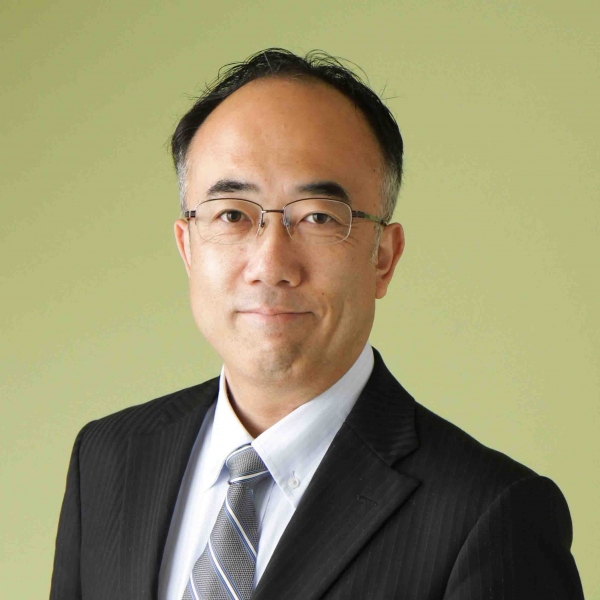 Prof. Jiro Kasahara Department of Aerospace Engineering, Nagoya University, Japan
Prof. Jiro Kasahara Department of Aerospace Engineering, Nagoya University, JapanTitle Detonation-engine-system space flight experiments and future roadmap
Detonation-engine-system space flight experiments and future roadmap
Prof. Jiro Kasahara
Department of Aerospace Engineering, Nagoya University, Japan
The detonation engine generates detonation and compression waves at extremely high frequencies (1–100 kHz) to drastically increase reaction speed, leading to radical reduction of rocket engine weights and high performance by easy generation of thrust. The research group has successfully demonstrated a detonation engine in space flight. The Detonation Engine System (DES) developed in this study was loaded onto the mission section of the sounding rocket S-520-31 and launched from the JAXA Uchinoura Space Center at 5:30 a.m. on July 27, 2021. After the separation of the first stage rocket, the rotating detonation engine and pulse detonation engine were successfully operated in space, and photo images, pressure, temperature, vibration, position, and attitude data were acquired by telemetry and RATS (Reentry and Recovery Module with Deployable Aeroshell Technology for Sounding Rocket Experiment). The fuel is methane and the oxidizer is oxygen. The success of this space flight demonstration will bring the detonation engine much closer to practical use as a kick motor for deep space exploration, and as a first and second stage engine for rockets. In this talk, we will show the detailed flight experiment and future roadmap of detonation engine development. -
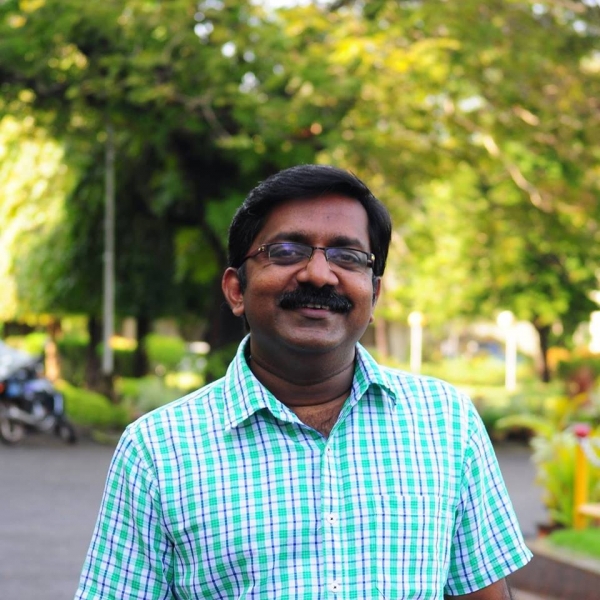 Prof. Rajesh Gopalapillai Department of Aerospace Engineering, IIT Madras, India
Prof. Rajesh Gopalapillai Department of Aerospace Engineering, IIT Madras, IndiaTitle A Review on the Predictions of Mach Reflection Configurations
A Review on the Predictions of Mach Reflection Configurations
Prof. Rajesh Gopalapillai
Department of Aerospace Engineering, IIT Madras, India
An Mach Reflection (MR) configuration is distinctive with the presence of many
discontinuities when compared to a Regular Reflection (RR). The triple point
where 4 discontinuities meet, the size and shape of the subsonic pocket after
the Mach stem, expansion shock interactions, the slip line and the height of the
Mach stem itself attribute to the profound changes in the flow field when the
shock reflection configuration changes from a RR to an MR. Of particular
interest, the Mach stem height forms a major length scale associated with the
MR configuration as it helps identifying the region of high temperature and
pressure forces in an MR. The analytical estimation of the Mach stem height and hence obtaining the MR ↔ RR transition criteria when the Mach stem shrinks to zero size has been an important area of research since many years. In this talk, I will give a detailed overview of the efforts towards quantifying the Mach reflection configurations which started with a simple analytical formulation by Azevedo (1989) for determining the Mach stem height in symmetric wedge flows which was subsequently modified by Li & Ben-Dor (1997), Mouton & Hornung (2008) in the same line of thoughts. Efforts towards refining the Mach stem heights based on the slipline curvature started with Tan, Ren & Wu (2006) and later elaborated by Gao & Wu (2010), Tao et al. (2017) and Bai & Wu (2017) for symmetric flows. This talk will cover the various efforts on the estimation of Mach reflection configurations in steady, symmetric, and asymmetric wedge flows, open jets, and the research gaps in this field.Dr. Rajesh Gopalapillai is working as a professor in the Dept. of Aerospace Engineering, Indian Institute of Technology, Madras. Before joining IIT Madras in 2013, He worked in various positions at Keimyung University, South Korea, Indian Institute of Space Science and Technology, Indian Space Research organization (ISRO) and Government Engineering Colleges in Kerala, India. He works in computational and experimental shock wave dynamics, interior, intermediate and exterior ballistics, blast attenuation, and bTBI. He has published more than eighty articles in reputed International Journals including Journal of Fluid Mechanics and Physics of Fluids and National and International Conference proceedings. He is a Life Member of International shockwave Institute, International Ballistic Society, and a Life Member and Governing Council member of the Society for Shockwave Research, India. -
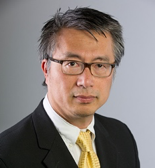 Dr. Ye Zhou Lawrence Livermore National Laboratory (LLNL), USA
Dr. Ye Zhou Lawrence Livermore National Laboratory (LLNL), USATitle Hydrodynamic instabilities and turbulence in traditional and high-energy density settings
Hydrodynamic instabilities and turbulence in traditional and high-energy density settings
Dr. Ye Zhou
Hydrodynamic instabilities and turbulence in traditional and high-energy density settings
Hydrodynamic instabilities such as Richtmyer–Meshkov (RM)1,2 and Rayleigh–Taylor (RT)3,4 instabilities usually appear in conjunction with the Kelvin–Helmholtz (KH)5,6 instability and are found in many natural phenomena and engineering applications.7,8,9 They frequently result in turbulent mixing, which has a major impact on the overall flow development and other effective material properties. This can either be a desired outcome, an unwelcome side effect, or just an unavoidable consequence, but must in all cases be characterized in any model. The challenges confronted by researchers are enormous. Essentially, a description of these flows must encompass both the temporal and spatial evolution of the flows from their inception. Hydrodynamic instability will usually start from potentially infinitesimal spatial perturbations, will eventually transition to a turbulent flow, and then will reach a final state of a true multiscale problem.10 Indeed, this change in the spatial scales can be vast, with hydrodynamic instability evolving from just a few microns to thousands of kilometers in geophysical or astrophysical problems.11 These instabilities will evolve through different stages before transitioning to turbulence, experiencing linear, weakly, and highly nonlinear states. In particular, the spatial and temporal criteria required for hydrodynamic instability driven flows to transition to turbulence have been established through theoretical analysis. In this keynote lecture, we provide an extensive survey of the applications and examples where such instabilities play a central role.
*This work was performed under the auspices of the U.S. Department of Energy by Lawrence Livermore National Laboratory under contract DE-AC52-07NA27344. Lawrence Livermore National Security, LLC.
1 Lord Rayleigh (John William Strutt), 1883. Investigation of the character of the equilibrium of an incompressible heavy fluid of variable density, Lord. Proc. London Math. Soc., 14, 170.
2 Taylor, G.I., 1950. The instability of liquid surfaces when accelerated in a direction perpendicular to their planes. I. Proceedings of the Royal Society of London. A. 201, 192.
3 Richtmyer, R.D., 1960. Taylor instability in shock acceleration of compressible fluids. Communications on pure and applied mathematics, 13, 297.
4 Meshkov, E.E., 1969. Instability of the interface of two gases accelerated by a shock wave. Fluid Dynamics, 4, 101.
5 Lord Kelvin (William Thomson), 1871. Hydrokinetic solutions and observations, {Philosophical Magazine}, {42}, 362.
6 von Helmholtz, H., 1868. On the discontinuous movements of fluids, {Monatsberichte der Königlichen Preussische Akademie der Wissenschaften zu Berlin}, {23}, 215.
7 Zhou, Y. Hydrodynamic Instabilities and Turbulence: Rayleigh-Taylor, Richtmyer-Meshkov, and Kelvin-Helmholtz Instabilities, Cambridge University Press (Spring 2023).
8 Zhou, Y., 2017a. Rayleigh–Taylor and Richtmyer–Meshkov instability induced flow, turbulence, and mixing. I. Phys. Rep. 720-722, 1.
9 Zhou, Y., 2017b.Rayleigh–Taylor and Richtmyer–Meshkov instability induced flow, turbulence, and mixing. II. Phys. Rep., 723-725, 1.
10 Zhou, Y., Clark, T.T., Clark, D.S., Glendinning, S.G., Skinner, M.A, Huntington, C.M., Hurricane, O.A., Dimits, A.M. and Remington, B.A., 2019. Turbulent mixing and transition criteria of flows induced by hydrodynamic instabilities. Physics of Plasmas, 26, 080901.
11 Zhou, Y., Williams, R.J., Ramaprabhu, P., Groom, M., Thornber, B., Hillier, A., Mostert, W., Rollin, B., Balachandar, S., Powell, P.D., Mahalov, A., Attal, N. 2021. Rayleigh–Taylor and Richtmyer–Meshkov instabilities: A journey through scales. Physica D: Nonlinear Phenomena, 423, p.132838.
Dr. Ye Zhou is a physicist at Lawrence Livermore National Laboratory (LLNL). Prior to joining LLNL, he was a senior staff scientist at the Institute for Computer Applications in Science and Engineering (ICASE), NASA Langley Research Center. He has published over 120 peer reviewed articles in such journals as Physics of Fluids, Physics of Plasmas, Journal of Fluid Mechanics, and Physical Review E (including eight major review articles in Reviews of Modern Physics, Physics Reports, Applied Mechanics Reviews, Physica D, and Physics of Plasmas), and has delivered keynote and tutorial lectures at several major international conferences, including Turbulence and Interactions and American Physical Society Division of Plasma Physics Annual Meetings. He was elected to be a fellow of the American Physical Society as well as the United Kingdom’s Institute of Physics and currently serves as an associate editor of Computers & Fluids. Previously, he was an associate editor of Journal of Turbulence, Journal of Scientific Computing, and Journal of Fluids Engineering, and a guest editor of Physica D (Nonlinear Phenomena) and Theoretical and Computational Fluid Dynamics. He is the author of the Cambridge University Press book “Hydrodynamic Instabilities and Turbulence: Rayleigh-Taylor, Richtmyer-Meshkov, and Kelvin-Helmholtz Instabilities,” published in Spring 2023. -
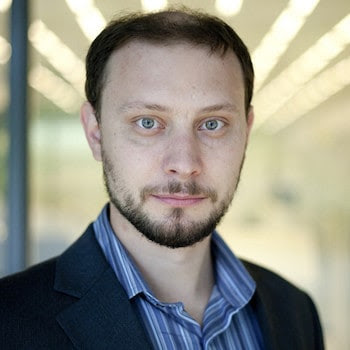 Prof. Mirko Gamba Aerospace Engineering at the University of Michigan, USA
Prof. Mirko Gamba Aerospace Engineering at the University of Michigan, USATitle On the existence and role of secondary effects impacting operation and performance of rotating detonation engines
On the existence and role of secondary effects impacting operation and performance of rotating detonation engines
Prof. Mirko Gamba
Aerospace Engineering at the University of Michigan, USA
Although the concept of using a rotating detonation wave in an enclosed (annular) chamber as a means of effective combustion dates back to the 1960’s, its use in rotating detonation engines (RDEs) has gained much attention only in recent years because of the thermodynamic benefits it offers for propulsion and power generation applications. The benefit offered by an RDE over conventional constant pressure combustion arises from the fact that, at least ideally, chemical energy release occurs at nearly constant volume across a detonation wave, rather than in a deflagrating region. The constant volume combustion provides an effective compression of the post-combustion gases over that provided by the compression stage. This additional compression results in what is referred to as pressure gain, which ultimately translates into increased amount of work extracted from the system, making an RDE a pressure gain combustion (PGC) device. Drawing from observations on multiple studies, we will first discuss the basic operation of an RDE and then focus on a series of phenomena, collectively defined as secondary effects, that are believed to limit the operation of the device, the dynamics of the detonation wave and possibly, its ability to generate pressure gain. Specifically, we will discuss the presence and impact of systems of secondary waves and secondary combustion fronts, which we term parasitic and commensal combustion regions. These two forms of secondary combustion have different impacts on detonation wave properties. In combination, they impact the stability and properties of the detonation wave, with consequences on achieving robust operation and gain in practical applications.Mirko Gamba is an Associate Professor in Aerospace Engineering at the University of Michigan, Ann Abor. His research focuses on fundamental research in a diverse range of advanced and sustainable application concepts for propulsion and energy conversion systems, using laser diagnostics techniques as tools to investigate fundamental phenomena that control operation of these systems. -
 Prof. Wolfgang Schaden Ludwig Boltzmann Institute for Traumatology, Austria
Prof. Wolfgang Schaden Ludwig Boltzmann Institute for Traumatology, AustriaTitle Mechanism of action of extracorporeal shockwaves in biological tissues
Mechanism of Action of Extracorporeal Shockwaves in Biological Tissues
Prof. Wolfgang Schaden, MD
Ludwig Boltzmann Institute for Traumatology, Vienna, Austria
Initially, a "mechanistic model" of the shockwave was assumed: According to this
theory, shockwaves, after penetrating the soft tissue mantle without causing
damage, produce microlesions in the target region and thus trigger the healing
stimulus. According to more recent findings in basic research, the assumption of a
mechanical effect proved to be incorrect.
From the mechanistic model to the body's own "bio-engineering"
Mechanotransduction
Through basic research by various research groups worldwide, it has been
demonstrated that shockwaves, without causing mechanical damage, trigger a
biological response in the treated tissue through their pressure, tensile and shear
forces. This process is called mechanotransduction. Under the influence of
shockwaves, the cell nucleus activates genes and groups of genes, which in turn
produce proteins (including growth factors) responsible for the healing process.
These cause increased ingrowth of newly formed blood vessels, which improves local
metabolism and initiates healing through the formation of new tissue.
Recent studies have demonstrated that the shockwaves in the cell nucleus also cause
the production of messenger substances that apparently mobilize the body's own
stem cells from the bone marrow, which then migrate to the treated tissue, settle
there and develop into the required cells (e.g. heart muscle cells). This makes it
possible to initiate the body's own regeneration without having to fear the possible
complications that can occur with stem cell transplants.
For medicine, this principle of action opens up completely new possibilities: Instead
of the costly and sometimes risky production of stem cell cultures and biologically
highly effective substances (growth factors) in laboratories, shockwaves can
stimulate the body's own system to produce such substances.
Since shockwaves can apparently induce a regenerative effect on all tissues, the
interest of scientists has focused particularly on the heart and nerve tissue, for which
conventional medicine has no causal therapy. After intensive basic research scientists
have succeeded in developing shockwave therapy to the point of clinical testing.Prof. Dr. Wolfgang Schaden is a specialist in trauma surgery and sports medicine. In addition to his clinical work at the Trauma Center Vienna, he began his scientific work in the early 2000s at the Ludwig Boltzmann Institute for Traumatology. Besides numerous clinical studies, the exploration of the mechanism of action of shockwaves in biological systems is the focus of his research. He has published more than 100 papers in peer reviewed journals
and has given numerous keynote lectures at international congresses and meetings. He is a founding member of the International Society for Medical Shockwave Treatment, of which he became president in 2019. He is currently a Primary Investigator on several clinical trials and a scientific advisor to the Austrian Workers' Compensation Board. He has been Vice President of the German Speaking International Society for Shockwave Treatment (DIGEST) since 2016 and he is an honorary member of several national and international scientific societies. -
 Dr. José Eid The General Secretary of International Society for Medical Shockwave Treatment, Brazil
Dr. José Eid The General Secretary of International Society for Medical Shockwave Treatment, BrazilTitle ShockWave treatment - Paradigm changes in the medical fields
ShockWave treatment - Paradigm changes in the medical fields
Dr. José Eid
The General Secretary of International Society for Medical Shockwave Treatment, Brazil
Shockwaves were originally introduced in medicine as Extracorporeal Shockwave
Lithotripsy (ESWL) in the early 1980’s for kidney stones treatment. Since then, this technology indeed has been increasingly applied also to a broad range of
musculoskeletal diseases.
Nowadays Extracorporeal Shockwave Treatment (ESWT) is currently applied to a wide range of pathologies of different origins and localization in different medical fields.
The medical literature, through the research and clinical studies, develop patterns, rules and models being a paradigm in the medical field, with the aim to create a set of elements, beliefs, techniques that are accepted, bringing models treatment for the several pathologies with Evidence Based in Medicine (EBM), offering us model solutions for the community involved in basic science and good clinical practice.
ESWT is a paradigm shift, changing the usual way of thinking, replacing by a new and different way with strong support of evidence based in medicine.
ESWT is a safe, noninvasive and efficacy method, representing a very useful and
interesting therapeutic tool in the field of regenerative medicine.• Since 2019 - Assistant of the Orthopedic/ Traumatology Department at the Hospital do Coração Hcor in São Paulo - Brazil
• 2015-2024 - General Secretary of International Society for Medical Shockwave Treatment (ISMST)
• 2017-2019 - Vice President Regional Brazil - IberoAmerican Federation of Societies and Associations of Shockwave Medicine and Tissue Engineering in Medicine (ONLAT)
• 2015-2017 - President of IberoAmerican Federation of Societies and Associations of Shockwave Medicine and Tissue Engineering in Medicine (ONLAT)
• 2009-2010 - President of Medical Brazilian Shockwave Society (SMBTOC)
• 2001-2003 - Founder and President of Medical Brazilian Shockwave Society (SMBTOC)
• 1990 - 1991 - Specialization in Knee Surgery
- Basel- Switzerland (Kantonspital- Bruderholz)
- Schwarzenbruck -Germany- Orthopadische Klinik (Krankenhaus Rummelsberg)
• 1989- 1990 Assistant Doctor in Knee Surgery - Orthopedic Department at Santa Casa de Sao Paulo - Brazil
• 1985-1988 - Specialization in Orthopedic and Traumatology Surgery at Santa Casa de São Paulo - Brazil -
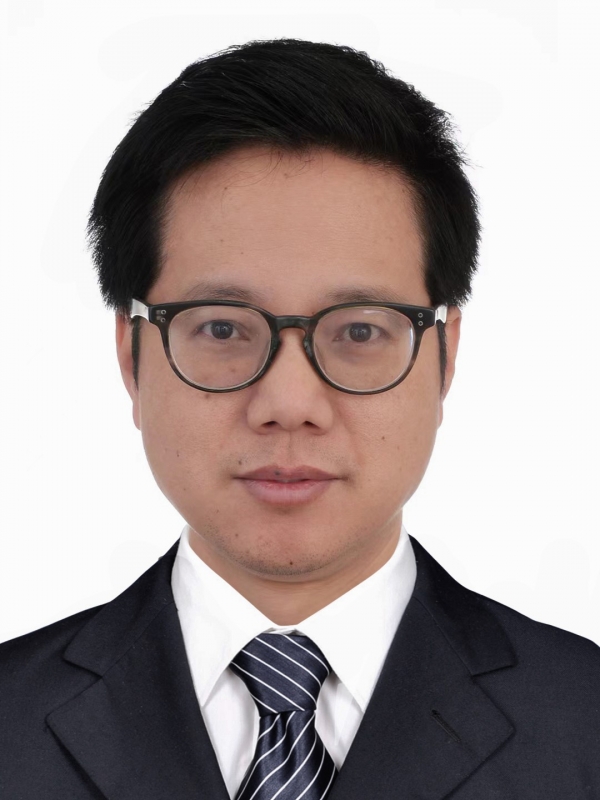 Prof. Kaiwen Xia School of Engineering and Technology, China University of Geosciences (Beijing), China
Prof. Kaiwen Xia School of Engineering and Technology, China University of Geosciences (Beijing), ChinaTitle Dynamic compressive response of porous rocks subjected to coupled
hydraulic-mechanical loadingDynamic compressive response of porous rocks subjected to coupled
hydraulic-mechanical loading
Prof. Kaiwen Xia
a. Institute of Geosafety, School of Engineering and Technology, China University of Geosciences (Beijing), Beijing, China
b. Department of Civil & Mineral Engineering, University of Toronto, Toronto, ON, Canada
Abstract
Deep rocks are in a natural environment featuring high in-situ stress and pore pressure, and their dynamic mechanical properties are of great significance to deep rock engineering problems. We developed an innovative split Hopkinson pressure bar (SHPB) system coupled with triaxial confinement and pore ressure. Using this system, we conducted a series dynamic compressive test of a green sandstone (GS). The experimental results indicate that the dynamic compressive strength of GS increases with the loading rate and the confining pressure, whereas decreases with the pore pressure.
Dynamic Coulomb strength criterion was first employed to describe the influence of the loading rate and the confining pressure on the strength parameters. The internal friction angle can be considered as a constant, whereas the cohesion is rate dependent but is independent of the pore pressure and the
confining pressure. Furthermore, the classical Ashby-Sammis micromechanical model was augmented by considering the dynamic loading and the pore water pressure, and then a dynamic constitutive model of deep rocks subjected to coupled hydraulic-mechanical loading was established and verified against the experimental results.Dr. Kaiwen Xia obtained his PhD degree from California Institute of Technology in 2005. After one year of postdoctoral research at Brown University, he joined University of Toronto in 2006 as an assistant professor in the Department of Civil and Mineral Engineering. He was granted the tenure in 2012 and then in 2023 he joined the School of Engineering and Technology, China University of Geosciences (Beijing). Dr. Xia’s research interest covers earthquake physics, rock dynamics, geological hazards, and geological storage of CO2. His academic contributions include the finding of supershear earthquake ruptures, development of spontaneous fracture tests, and development of innovative dynamic testing methods for rocks. So far, he has published 110 SCI journal articles. -
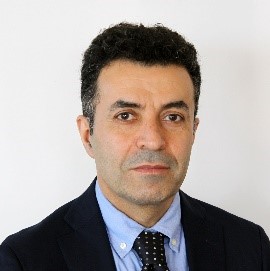 Prof. Hamid Hosano Biomaterials and Bioelectrics Department, Institute of Industrial Nanomaterials & Graduate School of Science and Technology, Kumamoto University, Japan
Prof. Hamid Hosano Biomaterials and Bioelectrics Department, Institute of Industrial Nanomaterials & Graduate School of Science and Technology, Kumamoto University, JapanTitle Shock waves in bioelectrics for medical therapy, green-energy/food extraction, and recycling
Shock waves in bioelectrics for medical therapy, green-energy/food extraction, and recycling
Prof. Hamid Hosano
Biomaterials and Bioelectrics Department, Institute of Industrial Nanomaterials & Graduate School of Science and Technology, Kumamoto University, Japan
The use of non-invasive or less-invasive medical procedures has numerous advantages, including cost, side effects, and post-procedure care, over conventional methods, particularly for the aging population. Recent advances in the control of electromagnetic and sonic waves propagation/interaction in deep tissue, have opened a new horizon for moving from non-invasive diagnosis to therapy, or even combining the two. Shock waves and electromagnetic waves offer their own advantages and limitations for therapeutic procedures. Meanwhile, they can be used for green biofuel extraction from microalgae and food processing with high efficiency. Another interesting application of pulsed power shock waves is for electronic-waste recycling to reduce environmental load. This talk summarizes our group's experiences with shock and electromagnetic waves induced by nanosecond pulsed electric fields for medical application, environmental protection, and electronic waste recycling. Current challenges and future opportunities in this regard will be discussed.
Keywords: Non-invasive therapy, Shock and electromagnetic waves, Energy and food extraction, RecyclingHamid Hosano received his Ph.D. degree in Aerospace Engineering from Tohoku University, Sendai, Japan, in 1999.
He was a Lecturer at Sharif University of Technology, from 1990 to 1996.
He served as Research Associate and Associate Professor at Tohoku University, from 1999 to 2006.
From 2006 to 2008, he was a Visiting Professor at the Department of Bioengineering, University of Washington, Seattle.
In 2008, he joined Kumamoto University as a Professor, where he is currently a faculty member of the Biomaterials and Bioelectrics Department, the Institute of Industrial Nanomaterials, and the Graduate School of Science and Technology.
His research interests are shock waves, pulsed power, and their biomedical application; bioelectrics; micro-fluidics; therapeutic ultrasound; and drug/nanoparticle delivery. Furthermore, he conducts studies on green energy, food preservation, waste recycling and environmental decontamination.
